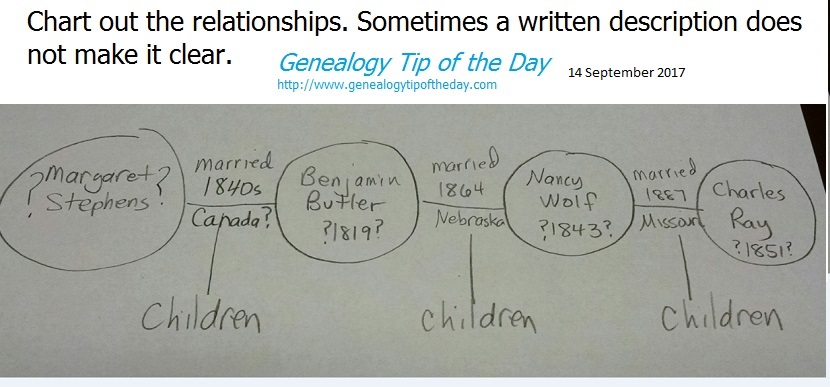Genealogists use maps of political and geographical features for many reasons, including to see where records might have been maintained and where an ancestor might have easily traveled to find a spouse or a job.
But maps of human relationships, biological, legal, and social may help as well. A family tree extending for ten generations may be nice to display, but is is helpful to your research when you are stuck on a specific person? A smaller chart, showing the relatives they may have interacted with may be more helpful. Don’t neglect to include “step” relatives and “in-laws” as those are people your ancestor may have interacted with as well. Another chart showing people the “problem” ancestor interacted with may be helpful also–just be certain the nature of their interaction (witness, neighbor, etc.) so that you don’t get more confused.

Genealogy Tip of the Day is proudly sponsored by GenealogyBank. Try their “GenealogyBank Search” and see what discoveries you make.








One response
Thank u for this clarification as I have wondered I needed yo include step families or neighbors. This reasoning now is explained.